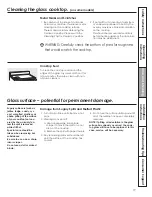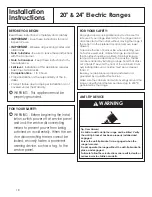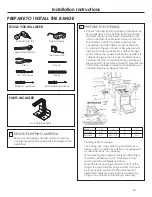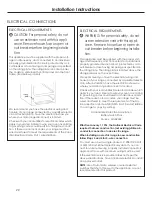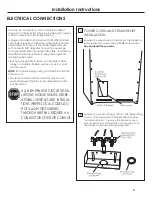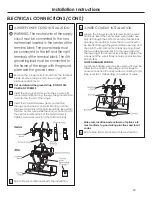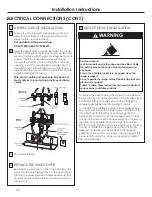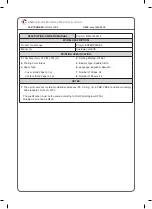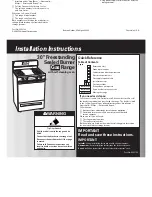
9
Safety Instructions
Operating
In
stru
ctio
ns
Care and Cleaning
Troubleshooting Tips
Consumer Support
Installation
In
stru
ctio
ns
Before you begin...
To avoid possible burns, place the shelves
in the desired position before you turn the
oven on.
The shelves have stop-locks, so that when
placed correctly on the shelf supports (A
through D), they will stop before coming
completely out, and will not tilt.
When placing and removing cookware,
pull the shelf out to the bump on the shelf
support.
To remove a shelf
, pull it toward you, tilt
the front end up and pull it out.
To replace,
place the end of the shelf
(stop-locks) on the support, tilt up the front
and push the shelf in.
NOTE:
The shelf is not designed to slide out
at the special low shelf (A) position.
Oven Temperature Knob
(on some models)
Oven shelf positions
The oven has four shelf supports—A (bot-
tom), B, C and D (top).
The oven has 4 shelf posi-
tions.
Turn this knob to the setting you want.
The oven cycling light glows until the oven
reaches your selected temperature, then
goes off and on with the oven element(s)
during cooking.
Preheating and Pan Placement
Preheat the oven if the recipe calls for it.
To preheat, set the oven at the correct
temperature. Preheating is necessary for
good results when baking cakes, cookies,
pastry and breads.
For ovens without a preheat indicator light
or tone, preheat 10 minutes.
Baking results will be better if baking pans
are centered in the oven as much as pos-
sible. Pan should not touch each other or
the walls of the oven. If you need to use
two shelves, stagger the pans so one is not
directly above the other, and leave ap-
proximately 1 ½" between pans, from the
front, back and sides of the wall.
Aluminum Foil
Do not use aluminum foil on the bottom of
the oven.
Never entirely cover a shelf with aluminum
foil. This will disturb the heat circulation
and result in poor baking.
A smaller sheet of foil may be used to
catch a spillover by placing it on a lower
shelf several inches below the food.

















